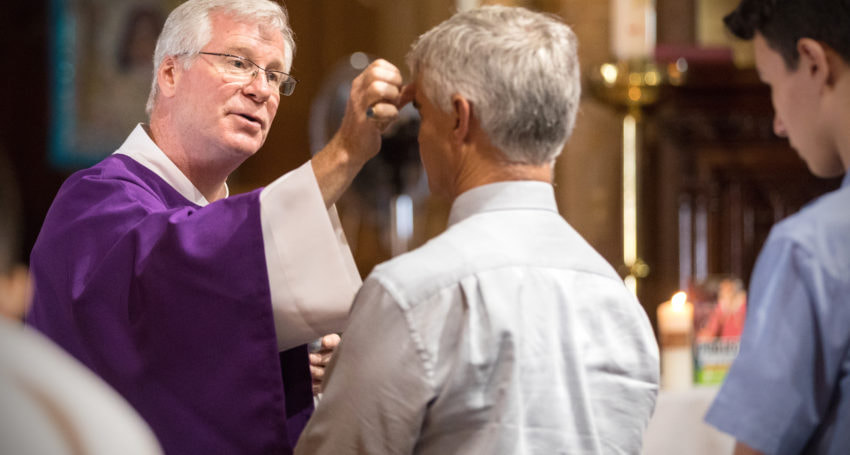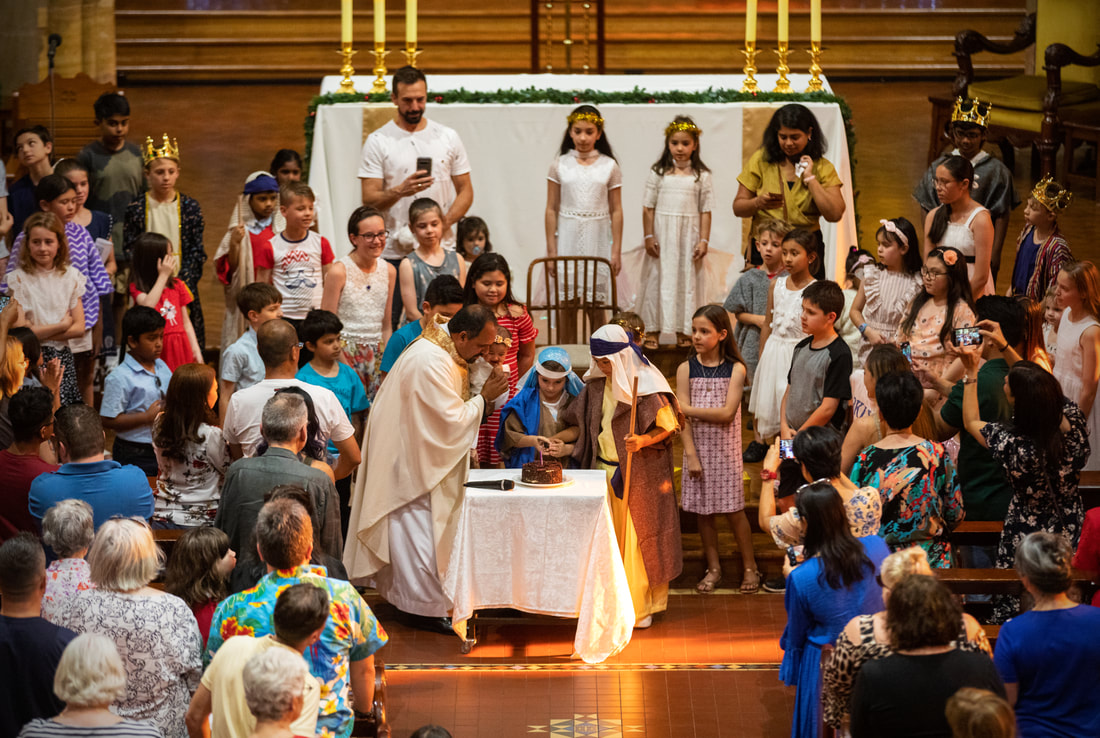|
By Dr. Jenny O'Brien The season of Lent extends from Ash Wednesday until the Mass of the Lord’s Supper on Holy Thursday evening, when the Easter Triduum begins. During this period neither the Gloria nor the Alleluia are sung, and a different Collect (Opening Prayer) is provided for every day, to emphasise the importance of these weeks.
But have you ever wondered where the practice of having our foreheads signed with ashes originated? The Old Testament tells us that those doing penance would dress in sack-cloth and put ashes on their heads as a sign of their repentance and we know that this practice continued with the early Christians. You may not know, however, that penance in the weeks leading up to Easter was linked to preparation for baptism of adults which, in the Early Church, often took place at Easter. Quite early in the piece it became customary for all Christians to support those preparing for baptism by sharing with them in prayer, fasting and almsgiving, and taking time to reflect on what their own baptism meant to them. An 8th century sacramentary contains a ritual for the ‘Day of Ashes’ so we know that this way of marking the beginning of Lent is at least 13 centuries old!
0 Comments
By Lauren Bierer Christmas lunch is either something you look forward to or something you dread. The food, the company, the conversations, the gift exchange; a lot of it hinges on both the choices you make and the people you are with. Are we gathering out of obligation or with love? How well do we know the people around the table? How could we make time with family and friends more meaningful?
Priya Parker, author of The Art of Gathering says that ‘a part of the art of gathering is to get people off their scripts and do things that are unexpected’. As we gather for the third Christmas since learning the word ‘COVID’, we must acknowledge that each person’s experience is unique. Trauma, fear, worry, anxiety, depression, loss, illness are all very real and significant in some people’s lives. Author: Dr Jenny O'Brien Hot cross buns and chocolate eggs are enjoyed by many over the Easter period, but not everyone understands their true significance. Behind those simple ‘treats’ stand the most profound events of human history. The cross on the yeast buns represents the crucifixion when Jesus, the Son of God died out of love for us. The egg represents the resurrection, when Jesus was raised to new life and lives for ever as the resurrected Christ. On Easter morning we hear the proclamation, “Christ is risen!” and our response is, “He is risen indeed, Alleluia!”
Author: Dr Jenny O'Brien It is striking how often Pope Francis refers to the family in his writings and homilies. In the week after Christmas we celebrated the feast of the Holy Family, and now at the beginning of February, the Presentation of Jesus in the temple. Both feasts call us to reflect on the vital link between a strong Christian family and a fruitful celebration of parish liturgy.
Mary and Joseph did not stand out as an exceptional family. Jesus spent 30 years in the family home in Nazareth where, Luke’s Gospel tells us, he ‘grew and became strong, filled with wisdom.’ Just as Mary and Joseph handed on faith and wisdom to Jesus, so parents today provide for their children ideals to live by and values to sustain daily living. Pope Francis once said, “Mothers are the strongest antidote to individualism because they “divide” themselves from the moment they give birth to a child.’ And Jesus himself gave God the Father the intimate name of “Abba” (Dad), shared by fathers today when they spend time in conversation, play and prayer with their children. Author: Jenny O'Brien The purpose of any calendar is to help people within a given society to order their lives. Most modern countries use the Gregorian calendar, but in actual fact there are about forty different calendars in use around the world today, particularly for determining religious dates. The Church’s Liturgical Calendar is one of these and is not so much concerned with “counting days” but in setting out guidelines for the celebration of the mystery of Christ over the period of a year.
The Liturgical Year is based on the fact that Sunday is the primary day when Christians gather to celebrate the death and resurrection of Christ, with Easter as the most important Sunday of the year. And while Christmas does not necessarily fall on a Sunday, the birth of Christ is the other major feast around which the Church’s year is structured. Author: Jenny O'Brien If you look in your Sunday Missal you will find an interesting fact: the weeks following Easter Sunday are not called the Sundays after Easter, but the Sundays of Easter. This is for a very good reason. The fifty days between Easter Sunday and Pentecost Sunday were viewed by the Early Church as a single great celebration of Jesus’ resurrection, like a “Great Sunday” that extended for a week of Sundays! Indeed the word “Pentecost” actually means “50 days” and it was the late fourth century before this title referred only to the fiftieth day.
Author: Jenny O'Brien It was St Augustine who famously said, “We are an Easter people, and Alleluia is our song.” In more recent times, this statement was taken up by St Pope John Paul II who reminded his listeners that for Christians, Easter is not just an historical commemoration, but the most central reality in our faith. It affects our very identity and dictates the way we live our lives. Jesus, who died on the cross, an object of derision and failure, abandoned by almost all his followers, was raised to new life. Without the resurrection, the death of Jesus would have been pointless. With the resurrection, we can live secure in the knowledge that we have been set free from the slavery of sin and death, that the way to eternal life has been opened up for us.
|
|
Catholic Archdiocese of Adelaide
|


